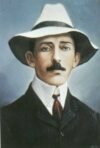Becoming a flight attendant
Becoming a flight attendant
Aim
· Practice English skills in an aviation context
· Revise or learn
· Have fun!
So you’ve decided on a career as a flight attendant. Congratulations! Sometimes deciding is the hardest part. Not only that, you’ve already started working on your languages skills and confidence – you’re well on your way!
The path to becoming a flight attendant can be divided up into the following:
Assessing suitability
Do you have the qualities and experience required for the role of flight attendant? Do you enjoy working with the public and are you comfortable in face-to-face situations? Do you have good listening/communication skills and interpersonal skills? Are you experienced in customer service and are you willing to undergo training? Note that many of these qualities are ‘skills’. That means they can be learnt!
Considering lifestyle factors
Are you willing to relocate to another city for work? Would you like to work on international or domestic flights? Do you have family or other commitments that require you work closer to home?
Research
Research each airline. Visit the airline website and read through the website career page. Find out where each airline flies to, and get a feel for each airline’s corporate image.
Cover letter
The cover letter is your first introduction, and first impressions are important. It should also make the recruiter want to read on to your resume. Make sure your cover letter is always tailored to the job/airline you are applying for.
Resume
A polished resume is your ticket to an interview. Spend some quality time preparing your resume – spend days on it, not minutes – or use a professional resume service. Make sure your references are current and contact details are correct. Don’t forget to tell your references to expect a call. Adjust your resume for every airline that you submit an application to.
Interview
Prepare for the interview by familiarising yourself with the interview process. Ensure you have a good understanding of the airline. Prepare some possible answers ahead of time, especially for the behavioural questions, ‘Tell us about a time when…’
Training
Training may either take place at airline or at a training school. The training period could be six weeks or six months, depending on the country and airline. Topics covered during training are listed in the table below, in the left column. Read through them and try matching them with a participant’s description from the right column.
|
1. Introduction to aircraft and aviation
|
A. We role-played possible scenarios. I had to calm an anxious passenger. |
|
2. Crew member coordination and communication
|
B. We learnt about the different roles of cabin crew |
|
3. Customer service
|
C. We practiced simple exchanges and transactions |
|
4. Managing passenger interactions
|
D. I’ve learnt so much about airplanes and the aviation industry! |
|
5. Safety and emergency procedures
|
E. We’ve been learning first aid, including CPR and using a defibrillator. |
|
6. Medical emergencies and medical training
|
F. Today was all about evacuation procedures |
|
7. Introduction to dangerous goods and hazardous materials
|
G. Routines and order, and service with a smile! |
|
8. Aviation security
|
H. There are so many new security rules and regulations to learn! |
|
9. Service procedures
|
I. Today we learnt about items prohibited in carry-on luggage, such as scissors and hairspray. |
Read QANTAS’ requirements for cabin crew here: http://www.flightattendants.qantas.com/International-from-the-UK/Essential-Requirements.aspx
Answers
1. D
2. B
3. C
4. A
5. F
6. E
7. I
8. H
9. G















